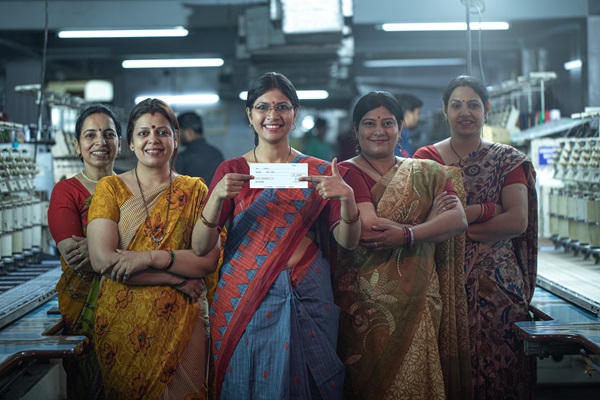.png)

Michael Patra is an economist, a career central banker, and a former RBI Deputy Governor who led monetary policy and helped shape India’s inflation targeting framework.
May 22, 2025 at 10:16 AM IST
There is a palpable optimism that this could be India’s century. The key to realising this future is a strong economy, not just for economic well-being but also for global stature and for national security.
Several tailwinds are conspiring to lift India’s destiny: resilient growth dynamics, largely home-financed; a digital revolution; political, macroeconomic, and financial stability; a rising industrial and export powerhouse - India is already among the top ten services exporters of the world with global leadership in information technology-enabled services and cutting-edge global capability centres on the way to making India a $100 billion hub by 2030; just to name some of them.
Most importantly, a demographic advantage has opened up that can last till the 2040s, expanding the working age population while the rest of the world ages.
Will India reap this dividend or let it slip away? Measured in historical time, the window of opportunity is closing fast.
Labour Productivity
Productivity in India is mainly a reflection of capital accumulation – the amount of capital per worker is rising; but the growth of labour productivity is lagging.
Fast changing skill requirements of the Industrial Revolution 4.0 are rendering the labour force less employable. More than three-fourths of the labour force toils informally, whether agricultural labour is included or not.
According to the International Labour Organisation, countries with low GDP per head (less than $5000 per year) tend to have high informality rates (more than 70% of the workforce).
These headwinds can snuff out the demographic dividend.
What is the way out? The answer lies in unleashing the full potential of our women into the workforce.
Statistics on women’s participation in the workforce are incendiarised by measurement controversies. Even so, there is without doubt a gender gap in workforce participation in India that can be closed in favour of women.
There is also some consensus that India has catch-up to do in female labour participation relative to similarly placed emerging and developing countries such as the BRICS.
Estimates suggest that South Asia, and India in particular, stands to make large gains in welfare and output by boosting the female labour force participation rate (FLFPR) and closing the gender gap in labour force participation, increasing household incomes, improving standards of living and enhancing productivity, as it happened in the US during the 20th century, particularly among low- and middle-class families.
There are collateral benefits too in the form of improvements in the assessment of working women in a more equal society, the emergence of new inspirational role models, financial independence of the home and hence a better quality of life. Other interesting insights emerge from the available data, pointing to the scope for women empowerment by employment.
There is a definite rise in female labour force participation since 2018 irrespective of the source of data. Some part of it can be attributable to the COVID-19 pandemic, underscoring how our women rise up to support family livelihoods in crises. Tellingly, unpaid family work features prominently in this increase, especially in rural areas.
Another view on which opposing sides in the measurement debate seem to agree is the role of women as caregivers in respect of both childcare and the elderly, given the ‘social security bias’ in the manner in which families in India are defined.
The fact that the childcare gender gap is so high in India in cross-country comparisons indicates a legacy upheld across time by our women. This is highlighted by the ILO’s finding that one-third of women working in informal jobs are contributing family members whereas less than 10% of male informal workers are in this status. Another force is the rising educational attainment of India’s daughters, which enables them to shrug off stigmas of the past and augment overall labour quality.
This is significant because of all men employed in the informal sector, a little more than half are independent, working on their own account or are employers.
For women, the comparable number is 37% and only 1% of them are employers.
In the formal sector, the incidence of women workers with no education is double that of men. In the informal sector, this incidence is even higher. In spite of these formidable handicaps, India is closing in on gender parity in the formal workforce, with 47% of men and 37% of women having tertiary education.
Workplace Reform
These aspects suggest by themselves the solutions. Work emanating out of the National Council of Applied Research is pointing the way forward. Formalisation of employment can be an overarching policy priority across the country, especially formalisation of part-time employment which will help women balance gainful employment with home-making and care-giving.
This work also suggests setting hourly minimum wages instead of defining them per day, ensuring job security, and providing access to social security benefits. Investing in care infrastructure such as childcare and eldercare can be another promising avenue of supporting working women, including by reducing the caregiving burden on women and creating new employment opportunities.
The pandemic showed us the productivity gains accruing from flexible work arrangements – allowing work from home or from anywhere remotely, flexitime work schedules and caregiving incentives that make for a better work-life balance.
Above all, it is vital to assure the dignity of women at work and the sanctity of their workplaces even if it means overhauling some deeply ingrained cultural rigidities. For India’s vision of becoming a developed nation, harnessing woman power is critical. Our women hold the key to a brighter future for our nation. Metaphysically, the primordial energising force is essentially identified with the feminine – Shakti.




